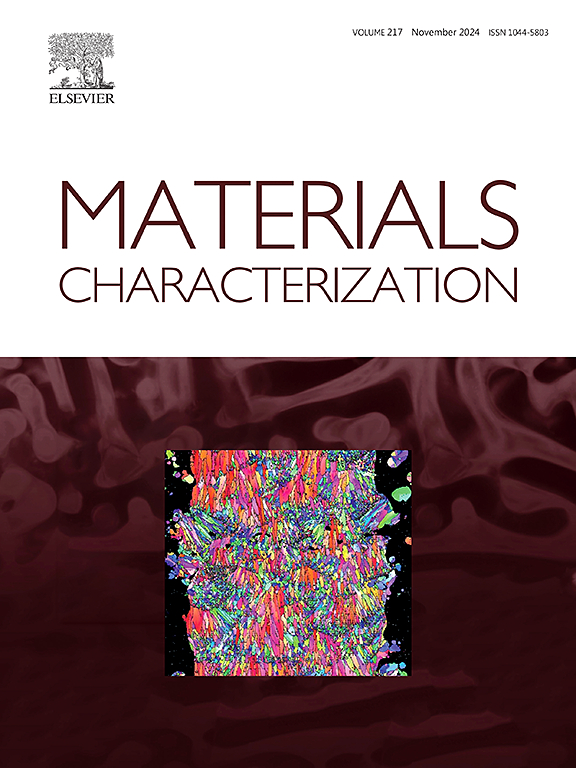High-strength GH4169D joint brazed with medium temperature Cu-30Ag-32Zn-1Sn filler metal
IF 4.8
2区 材料科学
Q1 MATERIALS SCIENCE, CHARACTERIZATION & TESTING
引用次数: 0
Abstract
The η-Ni6AlNb in GH4169D could pin grain boundaries, and hinder crack propagation. However, the dissolution of the η phase at 1020 °C causes the notch sensitivity in GH4169D. So low-melting-point alloys, Cu-30Ag-32Zn-1Sn (wt%) (CuAgZnSn), were employed to achieve high-strength brazing of GH4169D at different brazing temperatures (850, 870, 890, 910, and 930 °C) for 30 min and 890 °C for different holding time (10, 60, and 120 min). The influence of the brazing process on the interface microstructure, mechanical properties, and fracture behavior of GH4169D/CuAgZnSn/GH4169D joints was investigated. The brazed seam (BS) was mainly composed of (Cu, Zn)ss and (Ag, Zn)ss. The BS achieved isothermal solidification at 890 °C for 30 min and an ordered solid solution Cu2NiZn formed at 890 °C for 60 min. Meanwhile, the content of (Ag, Cu, Zn)ss decreased. However, as the holding time increased from 60 min to 120 min, the content of (Ag, Cu, Zn)ss increased from 0.7 % to 40.3 %. This was mainly because of the reduced solid solubility of Ag in the (Cu, Zn, Ni)ss as the Ni increased. The interface structure of the brazed joint at 890 °C for 60 min was GH4169D/Cu2NiZn + Cr-rich (Cr, Ni, Cu)ss/Cu2NiZn + Ag-rich (Ag, Cu, Zn)ss + Cu-rich (Cu, Zn, Ni, Cr)ss/Cu2NiZn + Cr-rich (Cr, Ni, Cu)ss/GH4169D. The shear strength of the joints reached 708 MPa. As the holding times increased, the crack initiated from the BS/substrates interface with drastic changes in hardness to the BS. The fracture morphology changed from typical brittle cleavage fracture characteristics to dimples and cleavage steps.
求助全文
约1分钟内获得全文
求助全文
来源期刊

Materials Characterization
工程技术-材料科学:表征与测试
CiteScore
7.60
自引率
8.50%
发文量
746
审稿时长
36 days
期刊介绍:
Materials Characterization features original articles and state-of-the-art reviews on theoretical and practical aspects of the structure and behaviour of materials.
The Journal focuses on all characterization techniques, including all forms of microscopy (light, electron, acoustic, etc.,) and analysis (especially microanalysis and surface analytical techniques). Developments in both this wide range of techniques and their application to the quantification of the microstructure of materials are essential facets of the Journal.
The Journal provides the Materials Scientist/Engineer with up-to-date information on many types of materials with an underlying theme of explaining the behavior of materials using novel approaches. Materials covered by the journal include:
Metals & Alloys
Ceramics
Nanomaterials
Biomedical materials
Optical materials
Composites
Natural Materials.
 求助内容:
求助内容: 应助结果提醒方式:
应助结果提醒方式:


